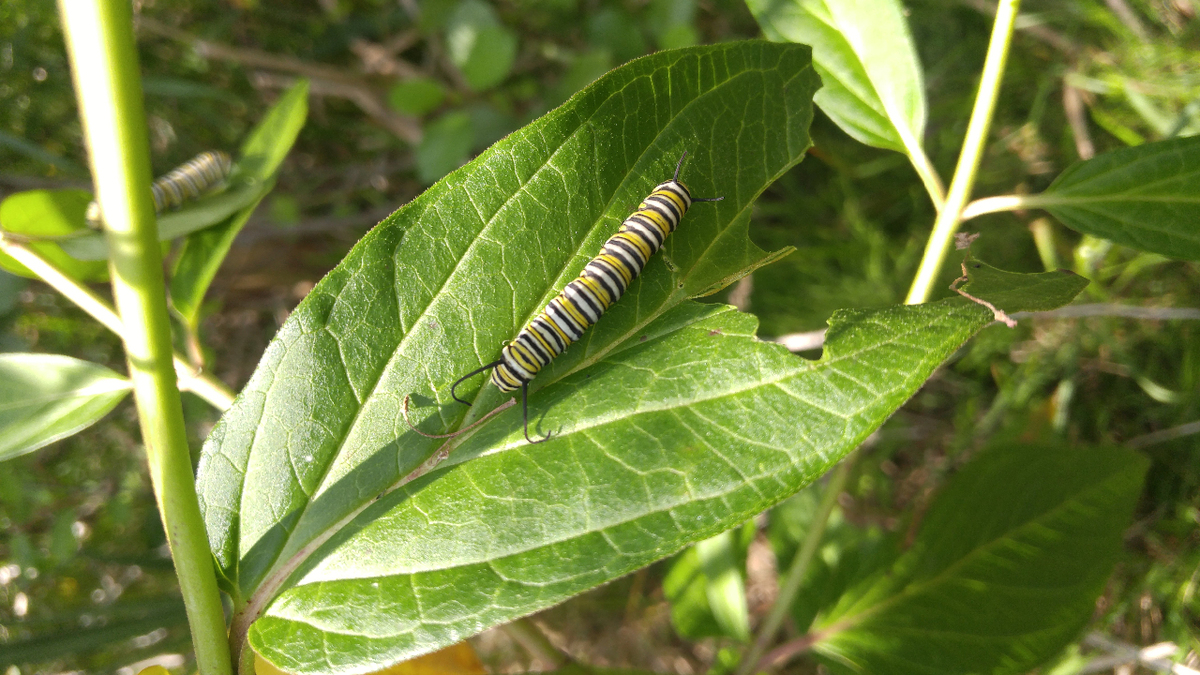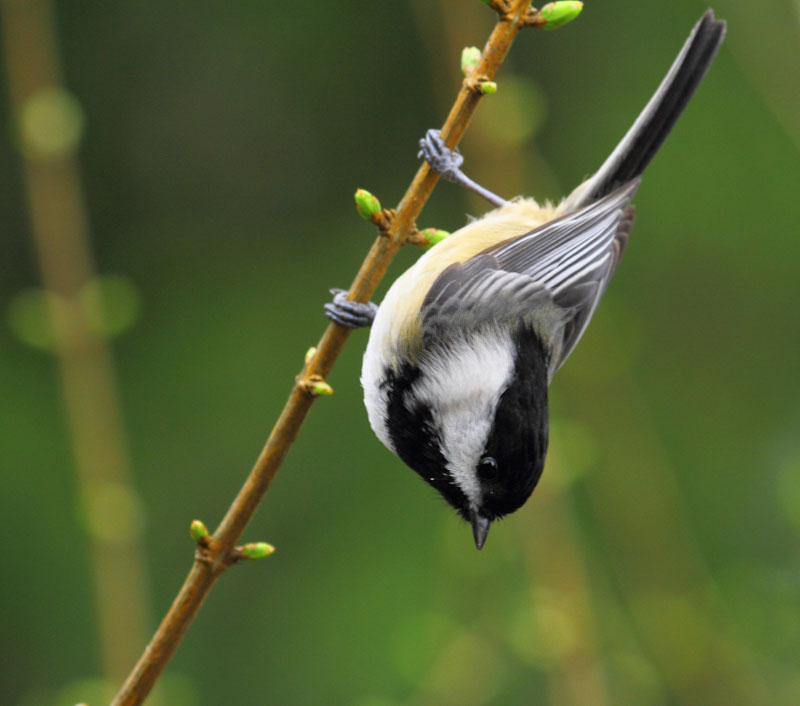
We collect basic website visitor information on this website and store it in cookies. We also utilize Google Analytics to track page view information to assist us in improving our website.
Written by: Summer Graham

Every time you decide to plant something in your garden or yard, you have the opportunity to make an important choice.
You can either choose a native species, one that can support a greater abundance of native wildlife (particularly insect herbivores) (Burghardt et al. 2010), or you can plant a non-native species that is less likely to have this benefit, and can even potentially become invasive.
This choice can have huge, bottom-up impacts on wildlife populations, especially now that Canadian landscapes are increasingly becoming more urbanized. Native nesting bird species often rely on insect populations to feed their young, so the amount of native or non-native vegetation on a landscape can directly impact the diversity and abundance of bird species in the area (Burghardt et al. 2009; Narango et al. 2010).
This is quantified by Douglas W. Tallamy, wildlife ecology professor at the University of Delaware:

"...But there are serious ecological consequences to such choices, and another exercise you can do at home makes them clear. This spring, if you live in North America, put up a chickadee nest box in your yard. If you are lucky, a pair of chickadees will move in and raise a family. While they are feeding their young, watch what the chickadees bring to the nest: mostly caterpillars. Both parents take turns feeding the chicks, enabling them to bring a caterpillar to the nest once every three minutes. And they do this from 6 a.m. until 8 p.m. for each of the 16 to 18 days it takes the chicks to fledge. That’s a total of 350 to 570 caterpillars every day, depending on how many chicks they have. So, an incredible 6,000 to 9,000 caterpillars are required to make one clutch of chickadees."
In addition to not supporting native wildlife, some non-native plants can actually seriously threaten certain species. For example, consider the relationship between the Monarch butterfly (Danaus plexippus) and native Milkweed species.
The Monarch has evolved so closely with native Milkweed species that it now feeds exclusively on them, and so relies on Milkweed as a host plant to lay its eggs on. European Swallow-wort (Vincetoxicum rossicum, a.k.a. Dog-strangling Vine) is a non-native member of the milkweed family that is considered invasive due to its rapid spread and highly prolific nature.
Monarchs can mistakenly lay their eggs on Swallow-wort plants, believing them to be native milkweeds. The caterpillars that hatch on these plants will die, as they are unable to feed on the non-native species (NCC, 2019).
So, what can you do? First, choose native! Use available resources like the Network of Nature Species Database to choose species listed as native to your region that will help to support local wildlife and contribute to the ecosystem.
Learn more about milkweeds and where they fit in your garden by checking out these recommended species:
Purple Milkweed(Asclepias purpurascens)
|
|
Swamp Milkweed(Asclepias incarnata)
|
|
Butterflyweed(Asclepias tuberosa)
|
|
Common Milkweed(Asclepias syriaca)
|
|
Showy Milkweed(Asclepias speciosa)
|
|
Second, control and manage invasive, non-native species on your property that pose a threat to native biodiversity. Visit the Ontario Invasive Plant Council website to learn more about managing invasive plant species.
• Ontario Invasive Plant Council “Grow Me Instead” Guide
• Opinion: In Your Garden, Choose Plants That Help the Environment
Douglas W. Tallamy, The New York Times
Burghardt, K. T., Tallamy, D. W. and W.G. Shriver. 2009. Impact of Native Plants on Bird and Butterfly Biodiversity in Suburban Landscapes. Conservation Biology, 23: 219-224. doi:10.1111/j.1523-1739.2008.01076.x
Burghardt, K. T., D. W. Tallamy, C. Philips, and K. J. Shropshire. 2010. Non-native plants reduce abundance, richness, and host specialization in lepidopteran communities. Ecosphere 1(5):art11. doi:10.1890/ES10-00032.1
Narango, D.L., Tallamy, D.W. and P.P. Marra. 2010. Native plants improve breeding and foraging habitat for an insectivorous bird. Biological Conservation: 213, Part A, ISSN 0006-3207. doi:10.1016/j.biocon.2017.06.029.
Nature Conservancy Canada (NCC). 2019. “Dog-strangling Vine”. Available online at: http://www.natureconservancy.ca/en/what-we-do/resource-centre/invasive-species/dog-strangling_vine.html
Photo: Black-capped Chickadee. Photo by Mark Daly, courtesy of the Canadian Wildlife Federation.
Join our email list to receive occasional updates about Network of Nature and ensure you get the news that matters most, right in your inbox.